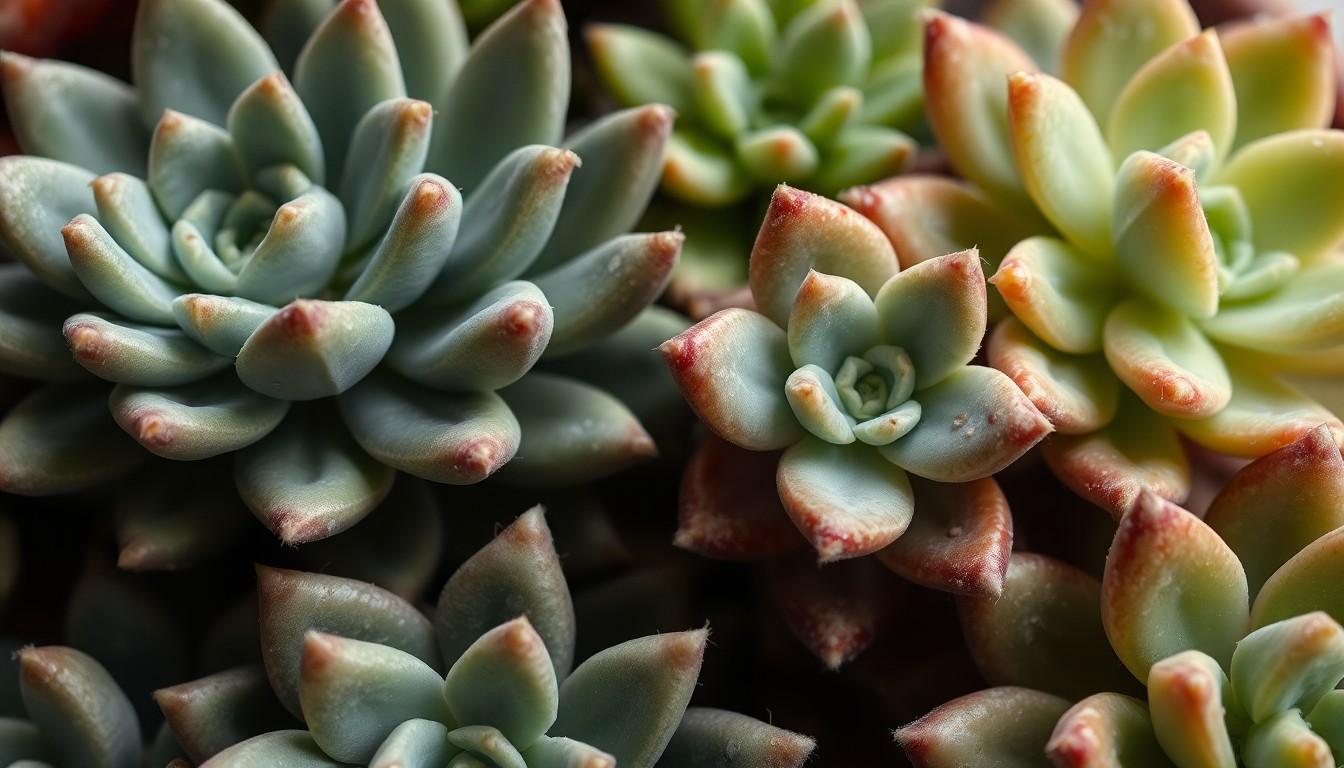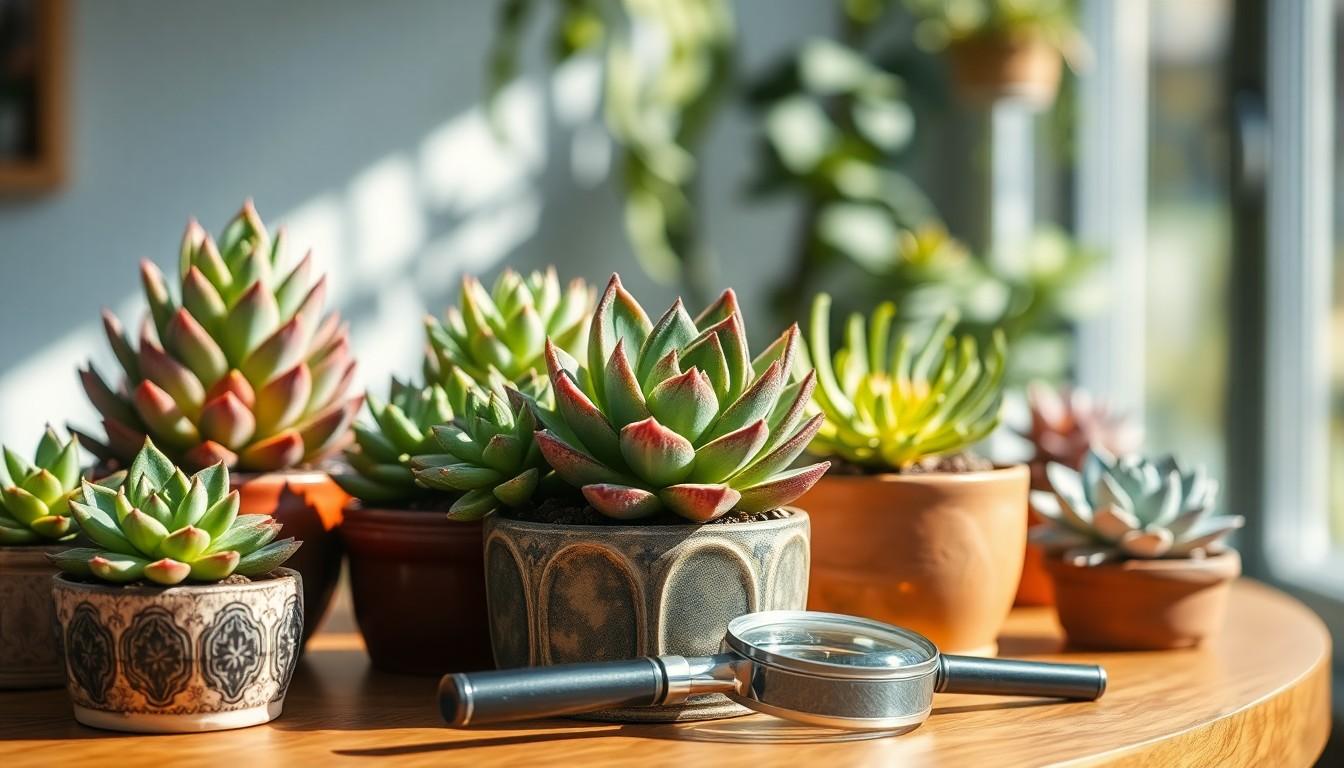Succulents are the darlings of the plant world, bringing a splash of green into homes and offices with minimal fuss. But what happens when these charming little plants become a buffet for unwelcome guests? Enter scale insects, the pesky party crashers that can turn your succulent paradise into a scene from a horror movie.
Understanding Scale On Succulents
Scale insects pose a significant threat to succulents. These pests can appear in various forms, affecting the health and aesthetics of these beloved plants.
What Is Scale?
Scale refers to small, sap-sucking insects that often infest succulents. These pests attach themselves to the leaves and stems, resulting in leaf discoloration and stunted growth. An adult scale insect covers itself with a protective coating, making detection difficult. The sticky honeydew they excrete encourages sooty mold growth, further complicating plant health.
Types Of Scale Pests
Two primary types of scale pests target succulents: soft scale and hard scale. Soft scale remains mobile during their early life stages and produces a sticky residue. Hard scale, on the other hand, remains attached and hardens into a shell, making them harder to remove. Both types severely impact nutrient absorption and overall plant vigor. Understanding the distinctions between these pests aids in effective management and treatment.
Identifying Scale On Succulents

Recognizing scale insects on succulents is foundational for effective management. Various signs and symptoms indicate an infestation, including leaf discoloration, wilting, and small, brown, or white bumps on the stems and leaves.
Signs And Symptoms
Vigorous discoloration occurs as scale insects suck sap from the plant. Leaves might curl or appear sticky due to honeydew secretion. Significant growth stunting suggests nutrient absorption issues caused by the pests. Yellowing leaves provide another symptom, often indicating stress from the infestation. Regular inspections reveal any changes that could signal an issue.
Common Species Affected
Many succulent species are susceptible to scale infestations. Echeveria plants often face attacks due to their dense foliage. Aloe vera experiences similar challenges, commonly attracting these pests. Jade plants frequently show signs of scale, particularly when stressed. Other common victims include Haworthia and Sedum. Each of these may exhibit unique responses to scale, underscoring the need for vigilant care.
Treatment Options For Scale On Succulents
Effective treatment options exist for managing scale infestations on succulents. These methods fall into two main categories: chemical treatments and organic solutions.
Chemical Treatments
Chemical treatments provide a direct approach to scale management on succulents. Insecticidal soaps and neem oil serve as effective examples. These products disrupt the life cycle of scale insects, leading to their eventual elimination. Application should occur during the early morning or late evening to avoid plant stress. When using chemicals, always follow manufacturer instructions for safe and effective use. Repeat applications may prove necessary to control persistent infestations. It’s important to monitor the plant after treatment for any signs of re-emergence.
Organic Solutions
Choosing organic solutions offers a more environmentally friendly approach for scale management. One effective method involves wiping the leaves with a damp cloth to physically remove scale insects. Alternatively, a mixture of water and mild dish soap can help eliminate pests when sprayed directly on affected areas. Regular applications every few days increase effectiveness. Introducing beneficial insects, such as ladybugs, may also help control scale populations naturally. Prioritizing these solutions can improve plant health without harsh chemicals.
Best Practices For Prevention
Implementing best practices for prevention minimizes the risk of scale infestations. Regular inspections of succulents can identify early signs of trouble. Ensuring proper air circulation around plants reduces conditions favorable for pest attraction. Avoiding overwatering helps maintain healthy plants, as stressed succulents attract pests more easily. Using clean tools when pruning or transferring plants prevents the spread of scale. Keeping succulents isolated from infected plants helps curb outbreaks effectively. Prioritizing these preventive measures ensures robust plant health and reduces infestations.
Care Tips For Healthy Succulents
Maintaining healthy succulents involves understanding their specific care needs. Effective management can significantly reduce the risk of scale infestations.
Appropriate Watering Techniques
Watering succulents requires a careful approach. It’s essential to allow the soil to dry thoroughly between watering sessions. Depending on environmental conditions, this typically means watering every 1 to 3 weeks. Overwatering leads to root rot, which opens the door for scale insects. When watering, aim to soak the soil deeply, ensuring moisture reaches the roots, yet keeping the leaves dry helps prevent disease. During the dormant winter season, reduce watering frequency as succulents require less moisture.
Optimal Lighting Conditions
Providing the right lighting conditions enhances succulent health. Most succulents thrive in bright, indirect sunlight for at least 6 hours per day. Insufficient light can make plants more susceptible to pests, including scale. Placing succulents near south or west-facing windows often yields the best results. If direct sunlight causes leaf burn, using sheer curtains can filter light effectively. Additionally, rotating plants occasionally ensures even growth, maximizing exposure to available light sources.
Conclusion
Maintaining healthy succulents involves vigilance against scale insects. Regular inspections and prompt identification of infestations can save plants from serious damage. By understanding the differences between soft and hard scale and recognizing signs of distress, succulent owners can take effective action.
Implementing both chemical and organic treatment options helps in managing these pests. Prevention is equally important; proper care techniques like appropriate watering and ensuring adequate light can significantly reduce the risk of scale infestations.
With the right approach, succulent enthusiasts can enjoy their plants’ beauty without the threat of scale insects undermining their efforts.

